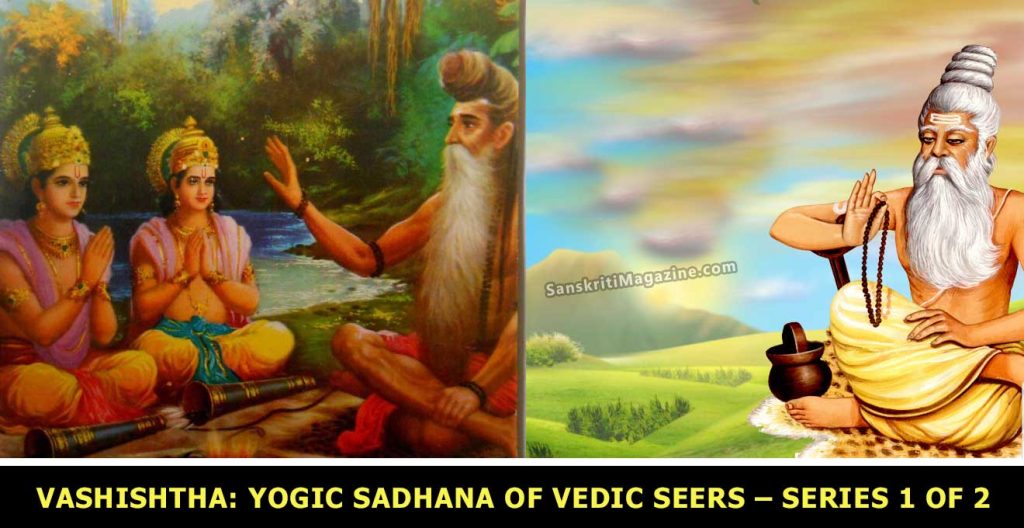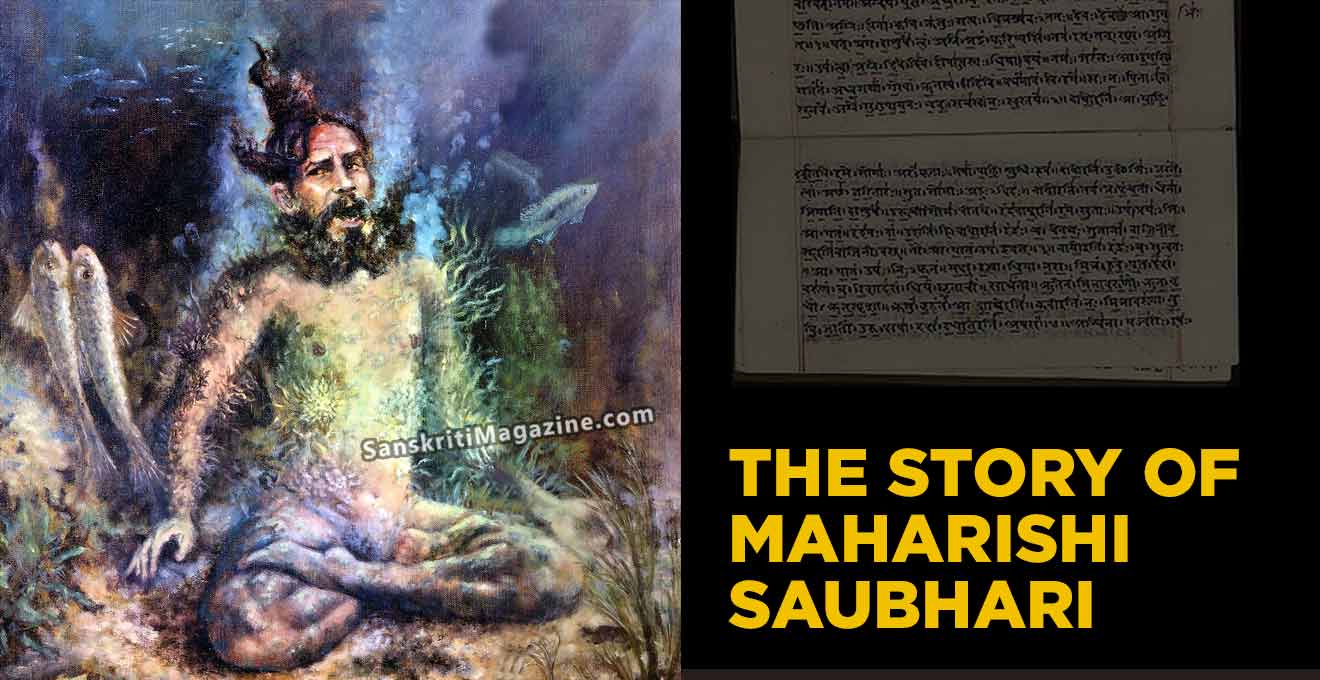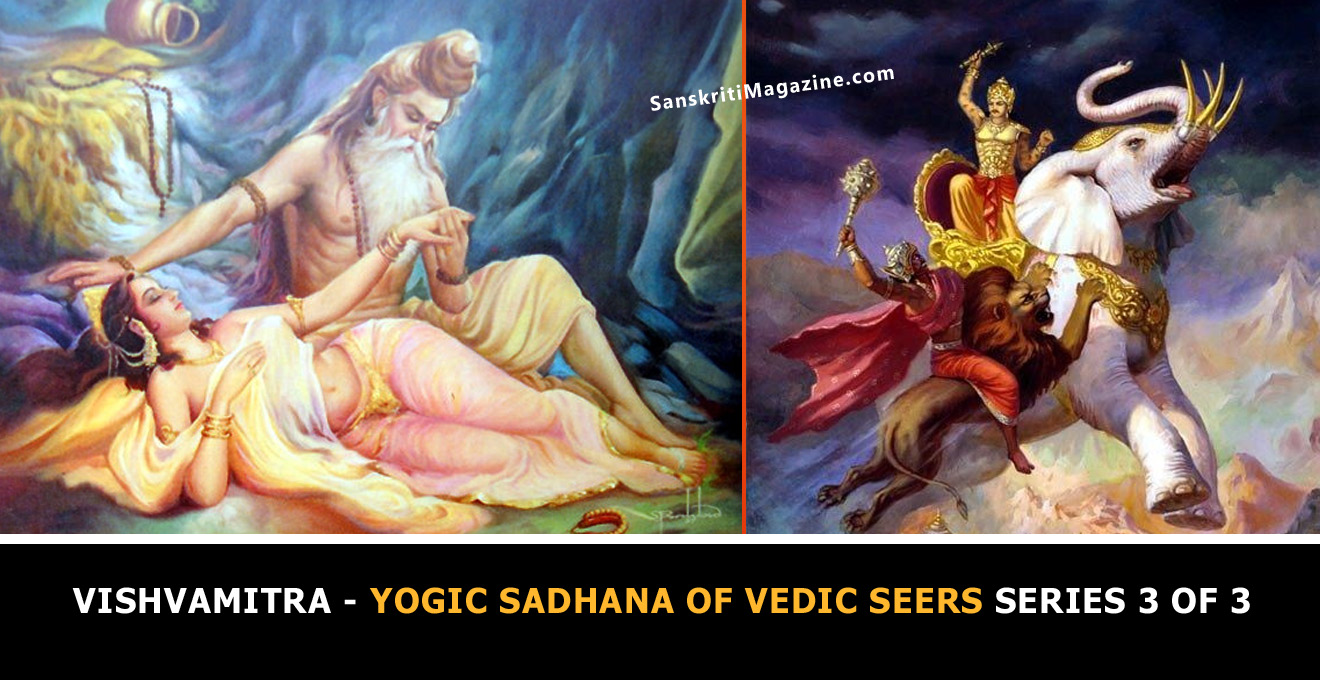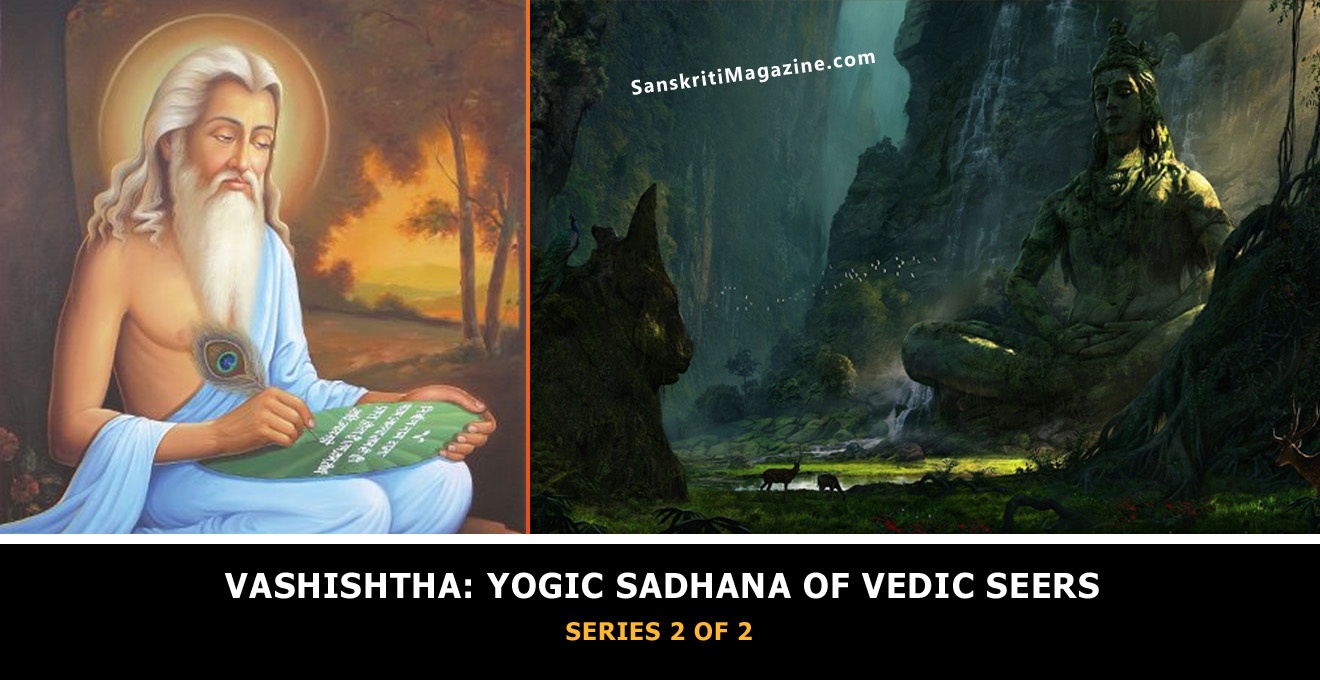~ By Mukesh Bhatnagar (Exclusive for Sanskriti Magazine)
Vashishtha is one of the most prominent seers of the Veda. He along with his progeny is the seer of the seventh mandala of the Rigveda Samhita comprising one hundred and four hymns amounting to more than one thousand mantras. His mantras include the maha mrityunjaya mantra which is one of the two most celebrated mantras in the entire Vedic literature. Needless to point out that the other one is the famous Gayatri seen by Vishvamitra, the seer of the third mandala of the Rigveda. How power the mantras seen by Vashishtha and his descendants were considered even in the Veda itself is evident from the following mantra:
Like the sun’s expanding light is the luminosity of them. They are as deep (in sense) as the sea itself and as speedy as the wind. Nobody else is capable of bringing to bear these qualities in the prayers, O Vashishthas. – RV.VII.33.1
It is obvious from the mantra itself how highly placed Vashishtha was amidst his contemporaries. His excellence as a seer is implicit in his name itself meaning the most luminous or enlightened. It is significant to note that many of the Vedic seers happened to have been given secondary names as per their accomplishments in vision and expression.
How did Vashishtha attain this excellence in seerhood? An indication to it is available in the next two mantras of the hymn in a relatively explicit way. The first one of these mantras reads as follows:
They move around what is available to us in a thousand branches and reach the secret destination by following indications of the heart. Thus, having passed through the process of weaving the cloth assigned to them by the Controller of the creation, they came to sit beside the Apsarasas. – RV.VIII.33.5
There may be some difference of opinion about the identity of the Apsarasas in this context but it is quite clear from the rest of the mantra that it talks of the Vashishthas having gone into the secret of the creation in all its infinite diversity and to have reached eventually the point of unity of all these manifestations which is a matter of constant quest for the Vedic seers and is very often described as the lap of Aditi, the goddess of Infinity. Infinity has infinite potentiality of diversification. Vedic seer’s awareness of this fact is evident from the well-known Upanishadic equation that the Infinite is a whole as also is a whole the finite and even after the deduction of the finite from the Infinite, the latter remains all the same intact in its wholeness (Brih Up. V.1.1)
How Vashishtha could have reached the idea of the infinite number of entities emerging from the Infinite and thus by getting woven with one another would have resulted in the universe where everything is so closely related with one another is indicated in the mantra by the term hridayasya praketaih. The word hridaya literally means heart which in such contexts in the Veda is not the physical heart serving as the pumping station of blood in an organic body. It really means the depth of the human consciousness lying beyond the reach of our commonplace awareness. It is by virtue of his access to that depth that the Vedic seer has come to be regarded as such.
By way of elucidating this point, one would like to refer to an anecdote as recounted in the Chandogya Upanishad. According to the Upanishadic account an enlightened teacher asks one his students to go to a solitary place and try to discover what lies inside the tiny space in the centre of the heart having conceived it as a lotus flower. The student tries his best to get the sense of the suggestion but having failed in his effort asks the teacher, ‘What can possibly be there inside the tiny space in the centre of the heart conceived as a lotus flower so significant as to be discovered and understood? (Ch. Up. VIII.1)
What the teacher observed in response to this query of the student is really the key to the understanding of the secret of the Veda and the accomplishment of any Vedic seer whosoever. The teacher observes:
The space inside the heart is as large as the space outside. Both heaven and earth lie inside it as also lie inside it both fire and air, the sun and the moon, lightning and stars. In fact, whatever lies in the space outside as also whatever does not lie there, all that is accommodated in that seemingly tiny space inside the heart. (Ch. Up. VII.1.3)
Thus, it is evident that the space inside the heart is the latent potentiality of the human consciousness through the use of which one is capable of knowing anything in the universe and even beyond. Obviously, it would have been by virtue of his access to that potential consciousness that Vashishtha would have got unveiled to him the secret of emergence of the finite from the Infinite in all its diversity. Herein lies the clue to the theory of all theories scientists today are trying hard to formulate but until now have failed even to unite the four physical forces together and not to talk of consciousness which is a category quite distinct from any physical force whatsoever.
Another significant autobiographical note Vashishtha has left for the posterity to ponder over concerns his voyage in the deep sea along with Varuna, his favourite deity. The account starts with the following mantras:
When I and Varuna boarded the boat and sailed in the midst of the sea and rode on the tides, let that experience turn splendid as if we were swinging on a swing. (RVVII.88.3)
This account has been taken by historians of culture to bear out the fact that the Vedic people were good mariners, so much so, of course as to undertake voyages on deep sea although it goes counter to the Aryan Invasion theory according to which the Vedic Aryans remained so much confined in their access to India as not have been aware of the sea at all. This evidence is sufficient to explain how the people of the Indus Civilisation could have trade relationship with the Mesopotamians even in the beginning of the third millennium B.C., as evident from the findings of sealings of the Indus seals in that land.
This interpretation, no doubt, is good so far as it helps in understanding the achievements of the people of India. But this is just a periphery of the mater. It explains only how the humans of that age took long voyages through the sea route. It, however, does not tell us anything about the possibility of a human being like Vashishtha travelling with a god. If Varuna was a sheer fancy of the seer, the voyage also would turn out to be a fancy but of a different variety. While the fancy of an ordinary man is based on his experience and that of a poet on his imagination, that of a seer is sure to be based on his deeper psychic experiences.
In support of this contention we have a mantra seen by him in which he observes that three heavens and three earths lie in Varuna and that besides them he has created a golden swing at the top of all these (RV. VII.87.5). That the former swing is not very much different from this golden swing is evident from another mantra seen in the continuation of one referred to last but one. In this mantra he expresses his satisfaction on having reached the house of Varuna of one thousand doors by virtue of his friendship with him:
What has happened to our friendship which was intact beforehand? We want to get it restored to us. (It was by virtue of this friendship) that I could have entry into your hosue which is as large in its make as to have a thousand doors in it. (RV. VII.88.5)
© 2017 Sanskriti Magazine. All rights reserved.











